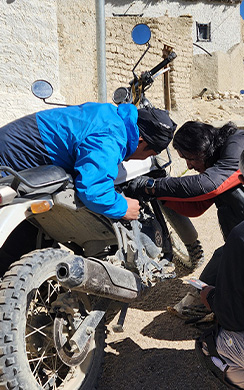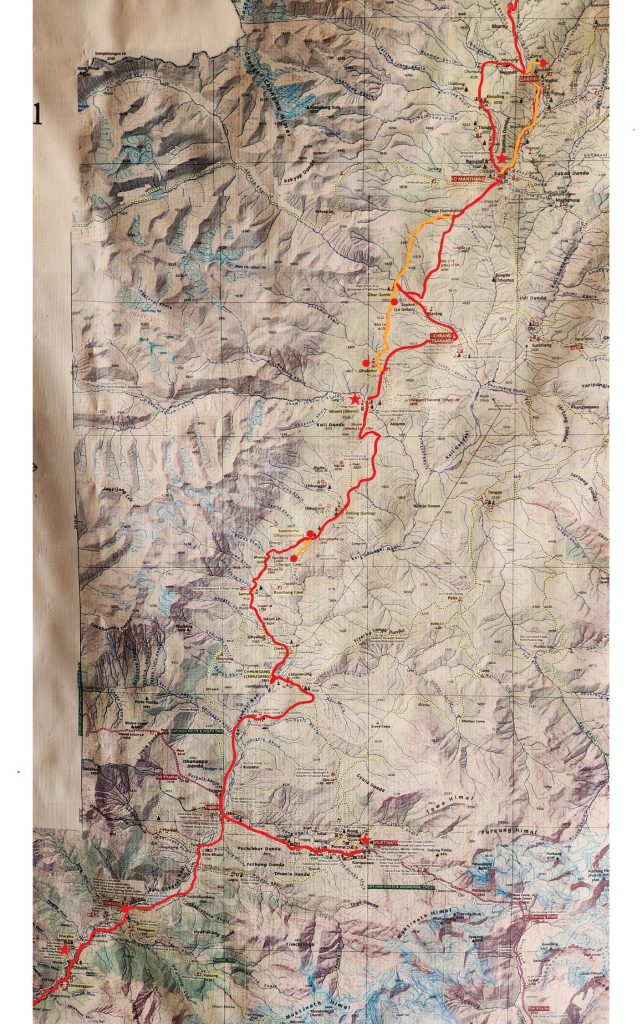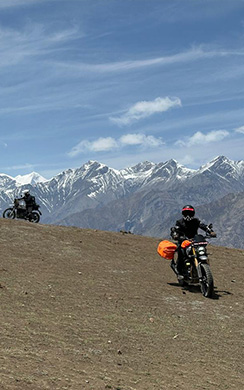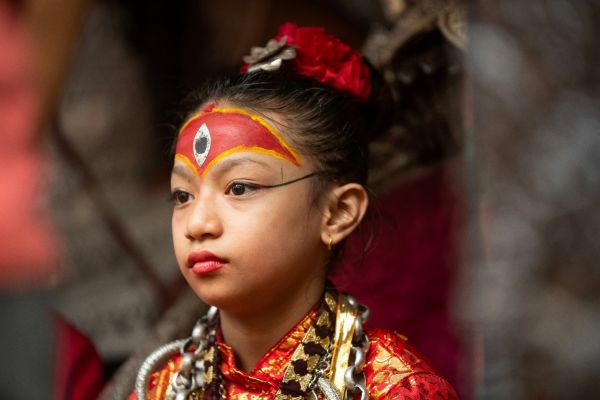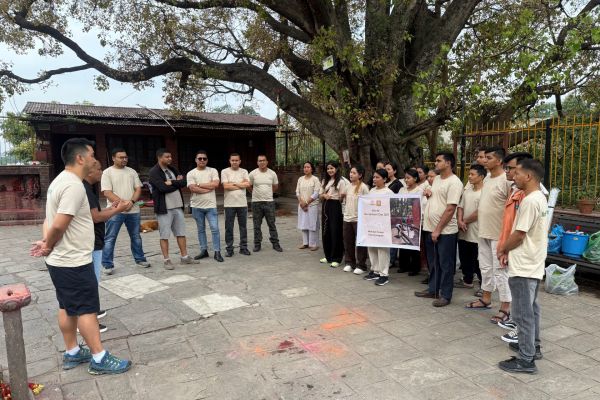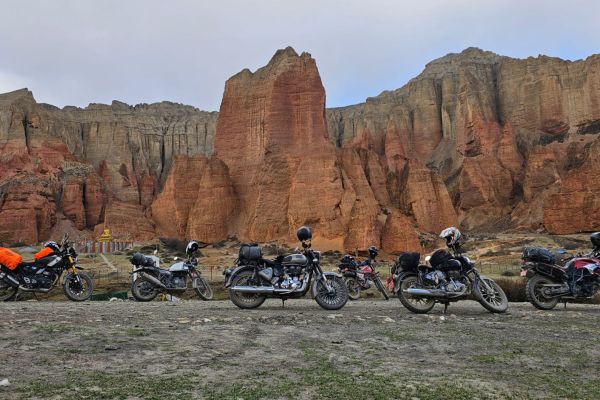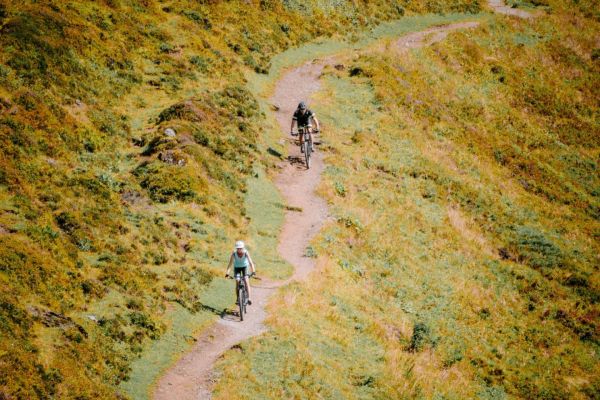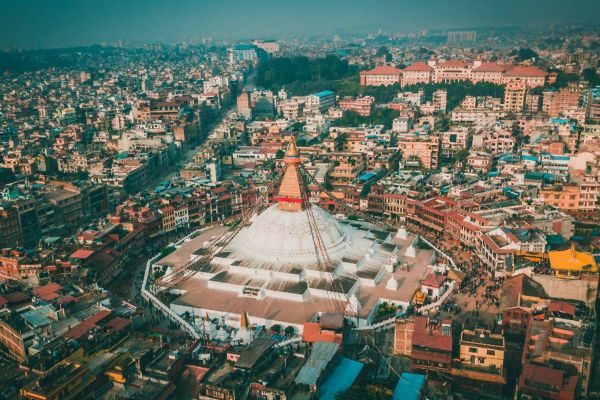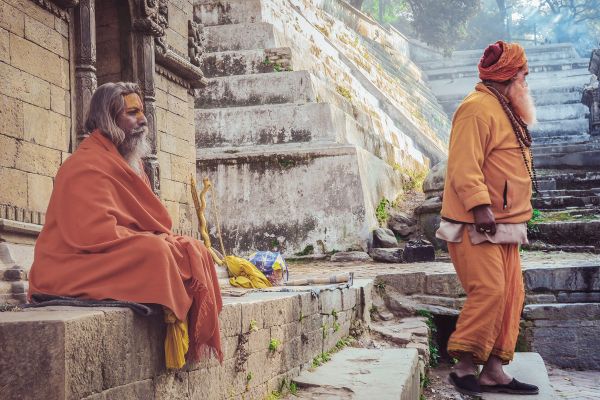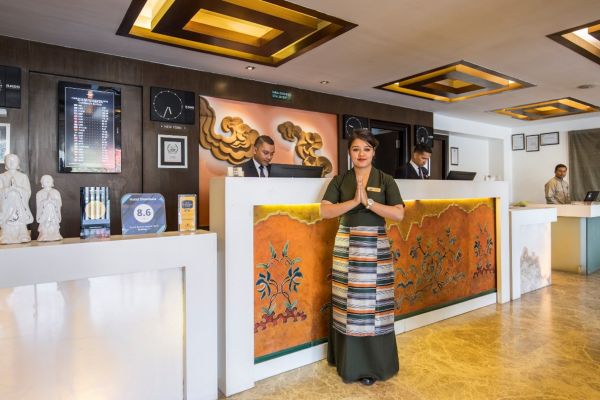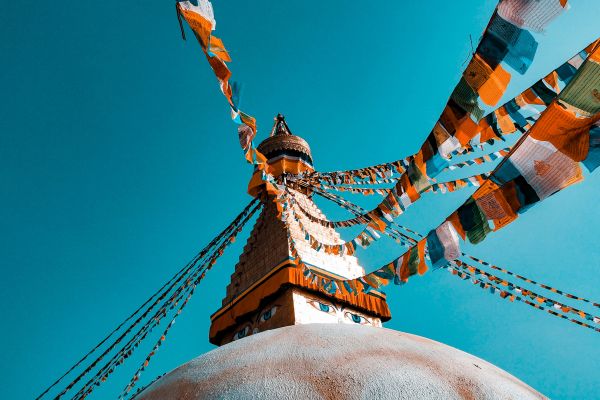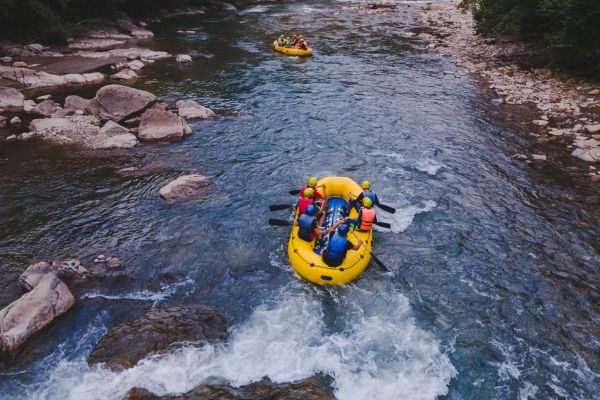A 7 Day Motorcycle Odyssey: Kathmandu to Lo-Manthang and Back
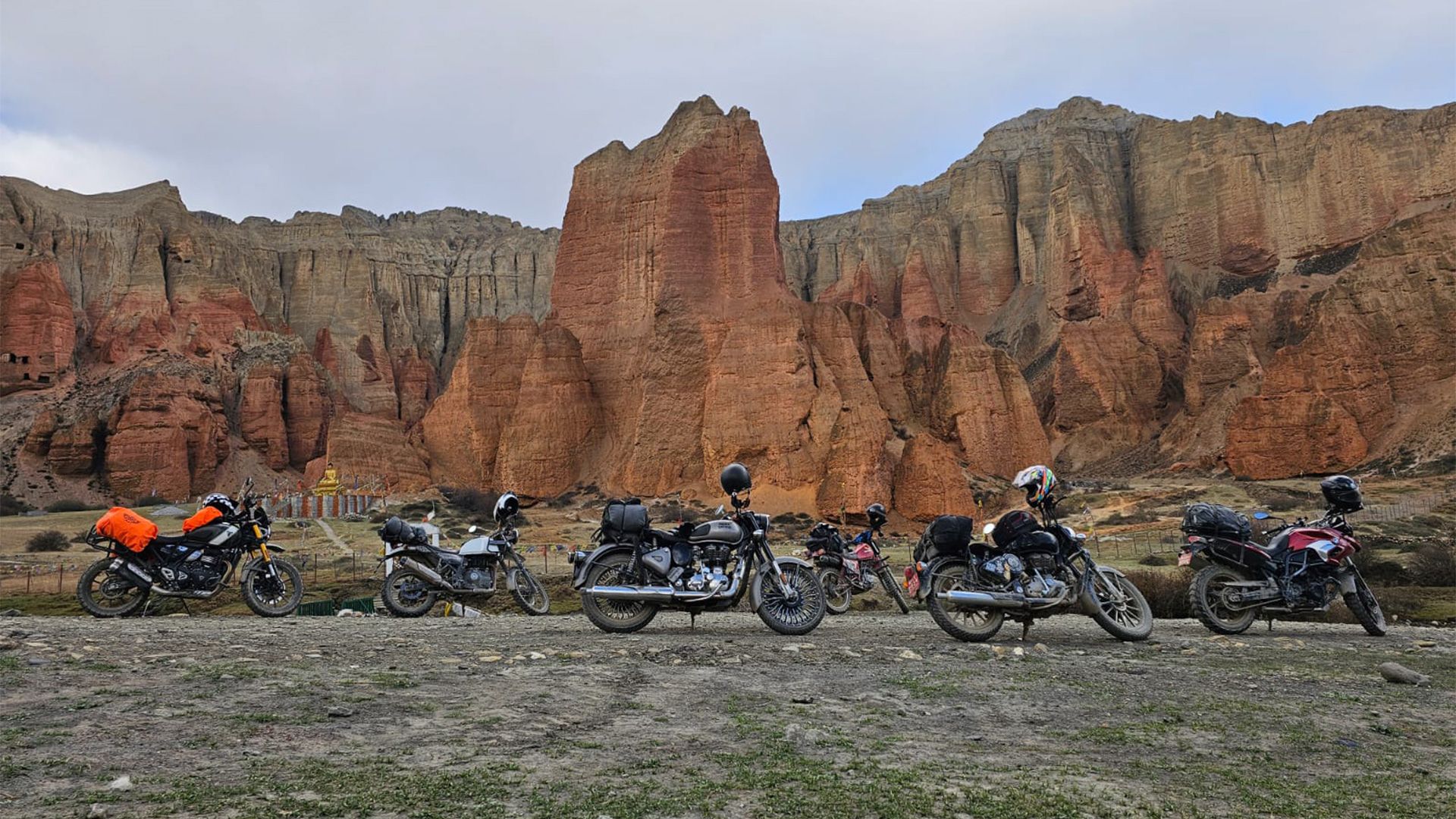
There’s something deeply liberating about the hum of an engine echoing through the Himalayas. Our 7-day motorcycle ride from Kathmandu to the mystical walled city of Lo-Manthang in Upper Mustang was nothing short of legendary. It was a journey of extremes landscapes, altitude, weather, and emotions all wrapped into one unforgettable adventure.
Our group was a mix of motorcycles, riding skills, and (somewhat) age, but united by a shared passion for exploring Mustang on two wheels. The motorcycles included a BMW 700GS, Triumph Scrambler 400, first-gen Royal Enfield Himalayan, two Royal Enfield Standard 350s, and a classic 1990 Honda XL 185cc.
Day 1: Kathmandu to Pokhara (200 km | Altitude: 822 m)
We began early, weaving through Kathmandu’s chaotic streets as the city slowly stirred awake. With the Prithvi Highway undergoing heavy construction – especially between Nagdhunga and Muglin – we opted for an alternative route via Dharke. It was narrower but scenic and far less congested.
The main highway alternated between smooth and rough patches, making the ride to Muglin feel longer than expected. Thankfully, after Muglin, the road was mostly complete and we picked up speed, barring a few areas still under construction. This leg was perhaps our least favorite – a standard highway filled with traffic and dust.
By late afternoon, we rolled into Pokhara, relaxed by the lakeside, and called it an early night. The real adventure was just beginning. We met some European riders along the way in Mustangs who had used an Indian tour company and had their bikes shipped directly to Pokhara, not a bad idea if you’re travelling from far away.
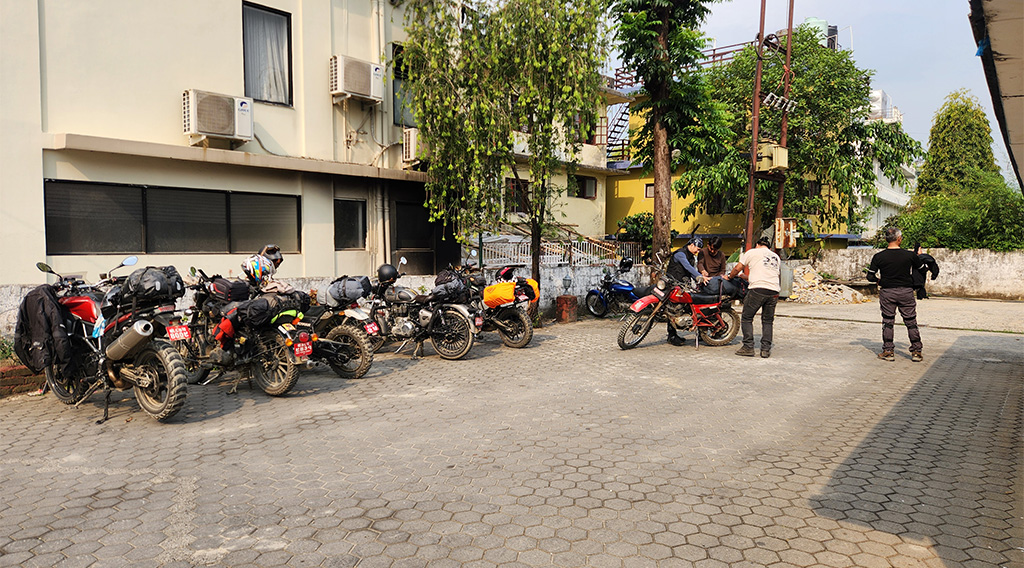
Day 2: Pokhara to Muktinath (170 km | Altitude: 3,800 m)
The ride from Pokhara to Muktinath was both breathtaking and demanding. We set off early, unsure what to expect as the roads in this region are constantly being made, ruined, and remade.
The stretch up to Baglung was smooth – newly built highway and rare high-speed riding for Nepal. But after Baglung, the road turned to off-road adventure. From Beni onwards, the dust and gravel began. Tatopani made a great midway stop for lunch.
As we climbed, pine forests gave way to dry, wind-whipped cliffs. The air grew colder and thinner, prompting more frequent breaks to layer up and hydrate. Luckily, May is a good time to ride Mustang -dry with only a light drizzle at best.
There were several checkpoints to register our motorcycle numbers and IDs – primarily to verify whether riders were Nepali or foreign nationals, the latter requiring special permits. We had initially planned to stay lower in Tatopani or Marpha, but decided to push through to Muktinath to spend more time in Upper Mustang.
We arrived in the late evening – tired, slightly breathless (walking up stairs at 3,800 m was no joke), but thrilled. If you’re not used to high altitudes, a stop at Marpha (2,800 m) the night before might be a wise move to help acclimatize your bodies.
Day 3: Muktinath to Lo-Manthang (90 km | Altitude: 3,800 m)
After a morning visit to Muktinath Temple and nearby Buddhist gompas, we set off for Upper Mustang – truly the “Forbidden Kingdom.”
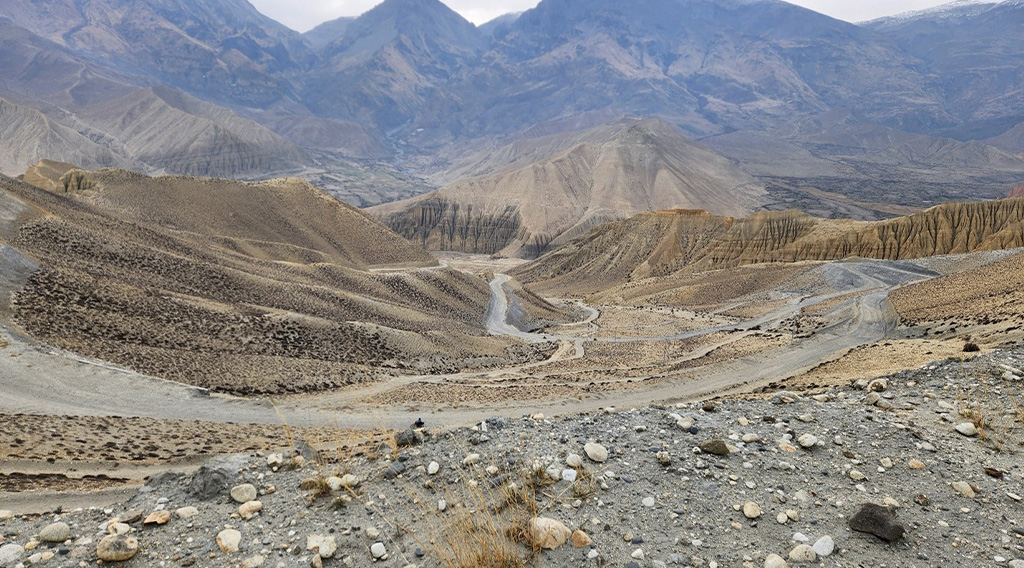
Up to Muktinath, the roads were a mix: partially paved, under construction, or just eroded. Past Kagbeni, however, the real adventure began. The rugged terrain of Upper Mustang greeted us with silence, scale, and soul.
At the checkpoint near Chele, our group was waved through (as Nepali citizens), but a solo Russian rider tagging along was turned back due to lack of a permit – a reminder that foreigners (including Indian nationals) require a $500 permit valid for 10 days for upper Mustang.
The terrain was rough, narrow, and seemingly deserted, adding to the thrill. We stopped at Syangboche for lunch, a good midpoint. We found a map on the wall which I took a photo of to help us navigate. From there, vast canyons and wind-swept plateaus dominated the landscape. We crossed sandy dunes (tipping over was part of the fun!) and even muddy stretches where bulldozers were at work.
Then, like a dream, Lo-Manthang appeared – a medieval walled city frozen in time. We rolled in just before dark, exhausted but exhilarated.
Day 4: Lo-Manthang to Ghami (via Korala Border Detour – ~100 km | Altitude: 4600-3,500 m)
We began with a stroll through the old summer palace – deserted and dilapidated, yet steeped in history.
Before leaving Lo-Manthang, we took a detour to the Korala Border – the northernmost point of Nepal, a mere stone’s throw from Tibet. The landscape was stark and windswept, and we met a few Mustangi-Tibetan locals at the border who shared stories and refreshments.
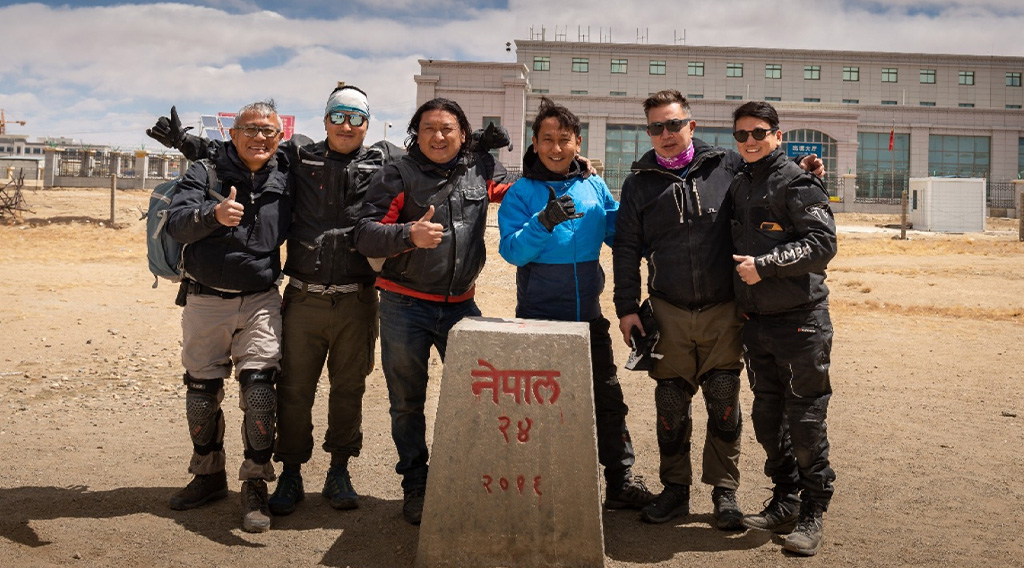
At 4,600 m, Korala was the highest point of our ride. The thin air affected both us and our bikes. On the way back, we visited Ghar Gompa – one of the most sacred sites in Mustang and possibly the first monastery established by Guru Rinpoche. Local legend says he defeated a demon here, and the red-orange rock is believed to be stained with the demon’s blood. That story alone made the detour worthwhile.
We arrived in Ghami by evening – a small, serene village surrounded by eroded hills and home to one of Nepal’s longest mani walls. A perfect end to a powerful day.
Day 5: Ghami to Marpha (105 km | Altitude: 2,800 m)
We explored Ghami in the morning, a village seemingly untouched by time. We were warmly hosted by Mayor Raju Bista, whose stories about Mustang’s history were a trip highlight. The ride is memorable, but it’s the people who leave a lasting mark.
Continuing southward, we decided on another challenge: Chhusang (Chunsi) Cave near Syangboche. A restaurant owner warned us the road was steep and they weren’t kidding. Reaching the cave wasn’t too bad, but the ride back up was brutal
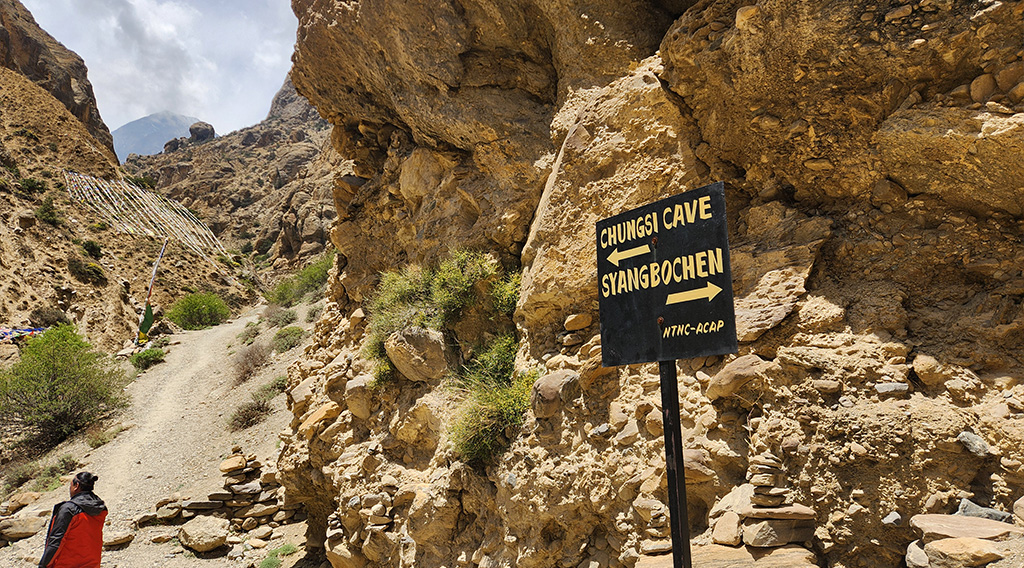
One of our Royal Enfield Himalayans refused to climb. After trying to push it manually, our group leader had a brilliant idea – remove the air filter to improve airflow in the oxygen-sparse altitude. It worked! The bike roared back to life, and we rejoined the road.
By late afternoon, we met another biker group with a mechanic who confirmed we’d done the right thing – keep the air filter off until we descend.
We rolled into Marpha by evening, wind-blown and victorious. The descent to Jomsom had brought color back to the terrain, though the gusty winds near Jomsom tested our grip. We held firm.
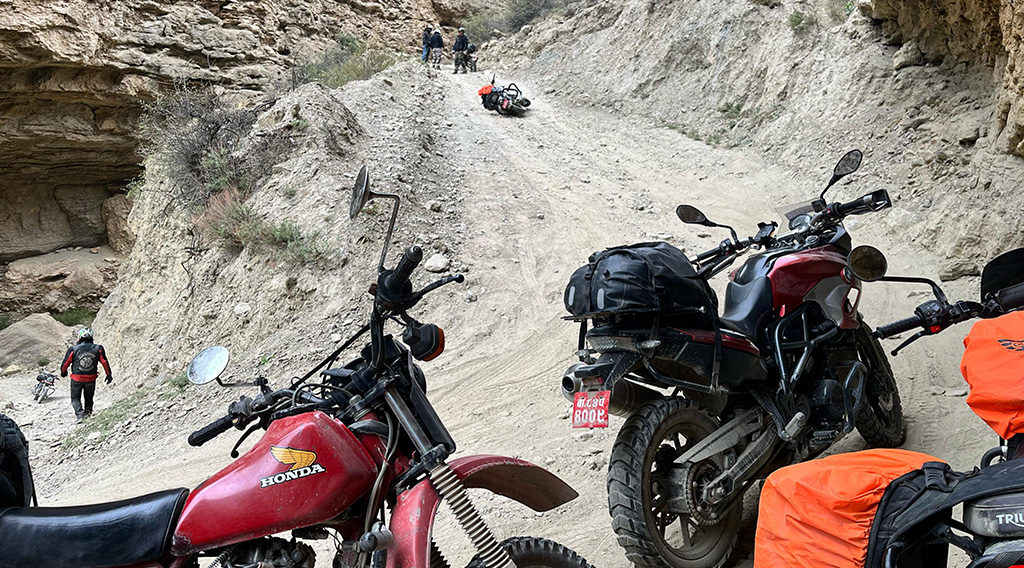
Day 6: Marpha to Pokhara (145 km Altitude: 822 m)
Marpha was a favorite – charming, low-altitude, and warmer. Traditional houses, peaceful alleys, and views of Dhaulagiri made for a picturesque morning.
The ride back to Pokhara felt surprisingly short and easy. Familiarity with the route, and the relative ease compared to the Upper Mustang terrain, made the day fly by. Some of us stopped again at Tatopani for a dip in the hot springs; others (myself included) skipped it, fearing the temptation to relax too much before finishing the day’s ride.
We arrived in Pokhara to warm weather, cold beer, and a bittersweet feeling – relieved to be back, but sad it was over.
Day 7: Pokhara to Kathmandu (200 km)
The final stretch.
With sore bodies and full hearts, we rode back to Kathmandu. We were different people now — not just bikers, but adventurers who had seen and felt Nepal in all its raw, untamed beauty.
Final Thoughts
The Kathmandu to Lo-Manthang motorcycle route isn’t just a ride – it’s a pilgrimage. A challenge. A love letter to the soul of Nepal. For anyone with a thirst for adventure, this journey will test your spirit, your endurance, and leave you in awe.
